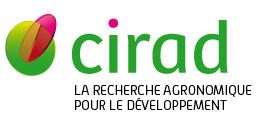New reading of Saharan agricultural transformation: Continuities of ancient oases and their extensions (Algeria)
Hamamouche M.F., Kuper M., Amichi H., Lejars C., Ghodbani T.. 2018. World Development, 107 : p. 210-223.
Agriculture in the Algerian Sahara underwent radical transformations during the second half of the 20th century. Agricultural development programs, aiming to integrate the Sahara in the national economy, were based on an agribusiness model implemented outside existing oases â in the so-called extensions â through the conquest of new agricultural land and the use of pumped groundwater. The rehabilitation of existing 'traditional' oases received less attention as their capacity for agricultural development was thought limited. While the new agricultural landscape is considered by policy makers to be a creatio ex nihilo, we demonstrate that the extensions are in fact, the creatio ex materia of the ancient oases, and that the two Saharan agricultural landscapes are firmly connected. The objective of this article is then to challenge the dichotomous view of Saharan agricultural development and the underlying binary policy categories. This demonstration is based on a study of the Sidi Okba oasis and the surrounding extensions. The results of this study first show that the binary framing of agricultural development in Algeria's Sahara is inadequate, as it neglects the temporal and spatial continuities and the hybridity of both landscapes. However, the study also shows that binary policy categories, even when they are inaccurate, participate in the construction of the new Saharan agricultural realities. We conclude that the new extensions are a better-adapted version of the traditional oasis in the context of globalization but in continuity with the ancient oasis. Questions concerning the social, economic and environmental sustainability of this model remain to be answered.
Mots-clÃĐs : algÃĐrie; sahel
Documents associÃĐs
Article (a-revue à facteur d'impact)
Agents Cirad, auteurs de cette publication :
- Kuper Marcel — Es / UMR G-EAU
- Lejars Caroline — Es / UMR G-EAU
